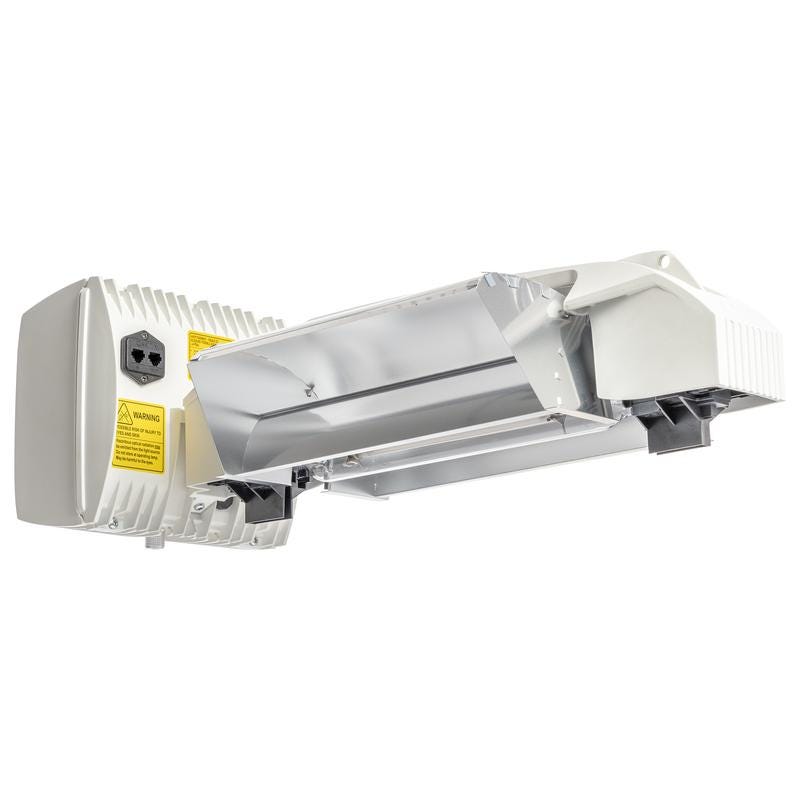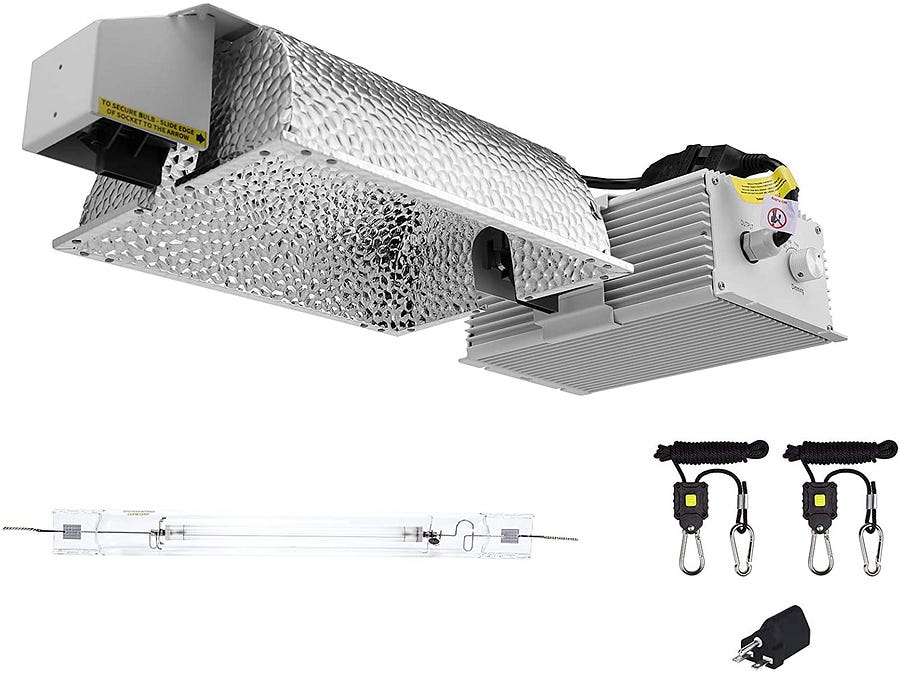- Home
- SHOP ECO FARM
-
TOP BRANDS
-
Grow Lights Brands
- Adjust-A-Wing
- Apollo Horticulture
- Bestva
- Black Dog LED
- California Lightworks
- ChilLED Grow Light
- Eco Farm
- HLG - Horticulture Lighting Group
- Kingled
- Kind LED
- Mars Hydro
- Morsen
- Neilo
- NextLight
- Phlizon
- PlatinumLed
- Roleadro
- Optic LED Grow Lights
- ViparSpectra
- Vivosun
- EYE Hortilux
- IPOWER
- NanoLux
- Phantom grow light
- Gavita grow lights
- Grower's Choice
- Lumatek
- Maxibright
- Yearld Pro
- ThinkGrow
- Crecer Lighting
- Green Sunshine Electric Sky
- fohse aries
- loriflux
- luxx
- fluence
- iluminar
- Lex
- LTC
- Rayonled
- FGI
- PHOTONTEK
- Grow Tents & Kits Brands
- Extraction & Harvest Brands
- Climate Control & Hydroponic Brands
-
Grow Lights Brands
- COMPANY INFO
- COOPERATE WITH US
- Blog
- Sign in
- Home
-
SHOP ECO FARM
- ECO Farm Grow Lights
- ECO Farm LED Grow Lights
- ECO Farm Quantum Board
- ECO Farm Samsung LED Grow Lights
- ECO Farm COB Grow Lights
- ECO Farm Commercial Lights
- ECO Farm Supplemental Grow Light
- ECO Farm Fluorescent grow lights
- ECO Farm HPS & MH Grow Lights
- ECO Farm CMH Grow Lights
- ECO Farm HID/CMH Bulbs & Ballasts
- ECO Farm Grow Tents & Kits
- ECO Farm 2x2ft Grow Kits
- ECO Farm 3x3ft Grow Kits
- ECO Farm 3.3x3.3ft Grow Kits
- ECO Farm 4x4ft Grow Kits
- ECO Farm 5x5ft Grow Kits
- ECO Farm Grow Tent - Standard Style
- ECO Farm Grow Tent - Extension & Roof & Lodge Style
- ECO Farm Extraction & Harvest
- ECO Farm Rosin Press Machine
- ECO Farm Dry & Wet Trimmers
- ECO Farm Oil Accessories
- ECO Farm Medicinal Plants Grinder
- ECO Farm Medicinal Plants Containers
- ECO Farm Medicinal Plants Dryer
- ECO Farm Refrigeration Dryer
- ECO Farm Climate Control & Other Accessories
- ECO Farm Inline Duct Fans
- ECO Farm Oscillating Fans
- ECO Farm Exhaust Fans
- ECO Farm Air Filter
- ECO Farm Duct Muffler
- ECO Farm Ventilation Kits
- ECO Farm Plant Humidifiers
- ECO Farm Plant Dehumidifiers
- ECO Farm Hydroponic Accessories
- ECO Farm Other Accessories
- ECO Farm Hydroponics Microscopes
-
TOP BRANDS
- Grow Lights Brands
- Adjust-A-Wing
- Apollo Horticulture
- Bestva
- Black Dog LED
- California Lightworks
- ChilLED Grow Light
- Eco Farm
- HLG - Horticulture Lighting Group
- Kingled
- Kind LED
- Mars Hydro
- Morsen
- Neilo
- NextLight
- Phlizon
- PlatinumLed
- Roleadro
- Optic LED Grow Lights
- ViparSpectra
- Vivosun
- EYE Hortilux
- IPOWER
- NanoLux
- Phantom grow light
- Gavita grow lights
- Grower's Choice
- Lumatek
- Maxibright
- Yearld Pro
- ThinkGrow
- Crecer Lighting
- Green Sunshine Electric Sky
- fohse aries
- loriflux
- luxx
- fluence
- iluminar
- Lex
- LTC
- Rayonled
- FGI
- PHOTONTEK
- Grow Tents & Kits Brands
- Apollo Horticulture
- Black Box
- CoolGrows
- Eco Farm
- GrowLab
- Gorilla Grow Tents
- Mars Hydro
- Quictent
- Secret Jardin
- Unit Farm
- TopoGrow
- VIVOSUN
- Topolite
-
COMPANY INFO
-
COOPERATE WITH US
- Blog
Gavita SL2 1000e DE 208–240 Volt W150 HID Grow Lights VS SunStream 1000 Watt DE Double Ended HID Grow Light Kit
August 17, 2021 1 Comment
For many plant growers, high-intensity discharge (HID) lights are the gold standard. They are more efficient than many other light bulbs and they crank out tons of super-powerful light. Generally speaking, HID lights do an excellent job of replicating the sun’s natural light. Here are the best HID lights for growing plants.
How Do HID Light Bulbs Work?
HID grow lights (both HPS and MH) are made of a quartz container, which is filled up with high-pressure gas. A starter ignites an electrical spark between the electrodes and produces an ionized gas which generates light.
What Is The Difference Between The MH and HPS Grow Light?
The HPS and MH grow light work best in the various different plant growth stages. Therefore, for optimum growing results, you will need to use both MH and HPS bulbs. The best HID grow lights allow you to use both MH and HPS light bulbs.
The differences between the two are summarized below:
MH: MH bulbs have a blueish light that works best during vegging.
HPS: HPS bulbs emit colors in the orange, yellow, and red lighting spectrum. Yellow, red, and orange lighting work well during the flowering growth stage.
Mercury-HPS and MH bulbs both contain a small amount of the hazardous substance, mercury. If the bulb is not broken, the mercury should not be of any concern. However, it can become a hazard and a pain to clean up if a light is accidentally broken. Also, disposing of MH and HPS bulbs can also be a hassle.
Equipment Needed For HID Grow Lights
Other than the HID lamp itself, the following are needed for HID growing lights
Ballast: The ballast allows an HID light to function with currents that are normally used in a typical household. Some of the ballasts that you may see are digital dimmable, ballasts that only work with either MH or HPS bulbs, or ballasts that work with HID light bulbs.
Reflector: reflectors are a cover over the HID lights, which are used to direct the lights over your plants.
Gavita SL2 1000e DE 208–240 Volt W150 HID Grow Lights

Features:
The Gavita grow light features the W150 Reflector, which has a widespread for optimal uniformity (150° beam angle). This reflector is best suited to overlapping plans. The SL2 features highly efficient passive ballast cooling that helps contribute to long fixture life. Other features include sealed housing with a Gore-Tex® ventilation plug and controllable output up to 1150 W. The SL2 is also equipped with a Repeater Bus interface. This double-port connection enables control of the SL2 with a Gavita EL Controller (sold separately). Connect up to 100 fixtures in a single daisy chain series, up to five daisy chains per EL controller output. A single EL controller output can control up to five 100-fixture daisy chains, giving you room to grow.
SunStream 1000 Watt DE Double Ended HID Grow Light Kit

Features:
This DE fixture is certified by ETL. The Sunstream grow light is subject to strict inspection standards, high-quality German materials and superb manufacturing processes to ensure the durability and safety of the HPS system. This complete fixture includes a built-in 120v/240v 1000w adjustable high-frequency ballast for running double-ended lamps. This ballast was designed with dimming features that could match different wattage lamps on the same ballast. When the grow HPS system is at a dangerous input or output voltage, the protection mechanism is activated, and the machine is automatically stopped to avoid damage to the machine or pose a threat to the human body.
Factors to Consider Before Buying Grow Lights for Plant
Before we reveal the different grow lights for plants, there are quite a few factors to consider. Therefore, we condense them into a handful of handy categories below.
Сost
First thing’s first; what is your budget? If it is under $100, you can still find something. However, you won’t get anywhere near the yield of what a $1,000+ high-quality LED system provides, for instance. Also, bear in mind that you need different lighting for the various stages of the grow cycle.
It is best to calculate how many plants you need each year. MMJ patients and regular recreational users are best served to make a one-off investment in decent standard lights. Also, the more harvests you intend to have, the quicker you ‘pay off the cost of lights. If you only plan to grow plants occasionally, HIDs may fit the bill because of their cheaper initial cost.
Ventilation
Certain lights run significantly hotter than others. HIDs, for instance, run extremely hot and need an air conditioning unit. Otherwise, the temperature of your grow room could become excessive and harm your plant’s growth. Please note this is an extra expense to add to the ‘cheaper’ HID setup.
Space
How big is your grow room going to be? If you don’t have much space, you should steer clear of ‘hot’ lights, or else the room’s temperature will increase rapidly. You also won’t have enough space to install an AC unit.
Safety
Check your breaker board to ensure there are plenty of outlets and enough power to handle your lighting easily. Next, go through your full list of equipment to determine its power usage. If you don’t have enough power capacity, the risk of electrical fires increases markedly.
Growth Cycle Stage
The lighting required by plants varies according to their stage in the growth cycle. Young plants require a different light spectrum from their mature counterparts. For example, Metal Halide lights are associated with plants in the vegetative stage. In contrast, HPS lighting is frequently used in the blooming phase.
Conclusion
When growing plants indoors, you have to decide what takes top priority. Do you care about your energy bills, the environment, secrecy, or efficiency?
If you’re looking for discretion, LED grow lights and fluorescent grow lights are the likeliest options. However, if you’re after efficiency, HID is probably the best grow light for plants available. That is, as long as you don’t mind the increase in your electricity bill.
Then again, if you have a grow space of less than five square feet, fluorescent light is enough when your plants are small. You can upgrade to a 250W HPS as the plants get larger. If you have space, an MH light for plants in the vegetative stage and HPS for the blooming phase works well. Using MH lighting throughout is fine but will have fewer flowers, more foliage, and a lower yield.
Different options work best for different solutions, so pick the one that’s right for you and work to its advantage. Once you have selected the right light for your needs, you can start the growing plants. After choosing the soil type, your fertilizer preferences, and a few other things, of course!
1 Response
Leave a comment
Also in News

What are the best LED grow lights to use in a grow tent?
June 27, 2024
When choosing Best LED Grow Lights, you should also consider the durability of the lamp, energy efficiency and whether it can meet the light needs of specific plants. For example, the LED plant growth lights provided by Philips Lighting are designed for specific crops to promote uniform growth and improve quality and yield.

Can I use normal led lights to grow plants indoors?
June 20, 2024

What's the best indoor LED growing light on Amazon USA?
June 15, 2024
On Amazon, hot growth light types include LED Growing Lights, which have a variety of functions and features such as automatic on/off timing, red and blue LED light combinations, multiple dimmable modes, and flexibility for indoor potted plants or indoor gardens.

oukdavujha
November 03, 2024
Muchas gracias. ?Como puedo iniciar sesion?